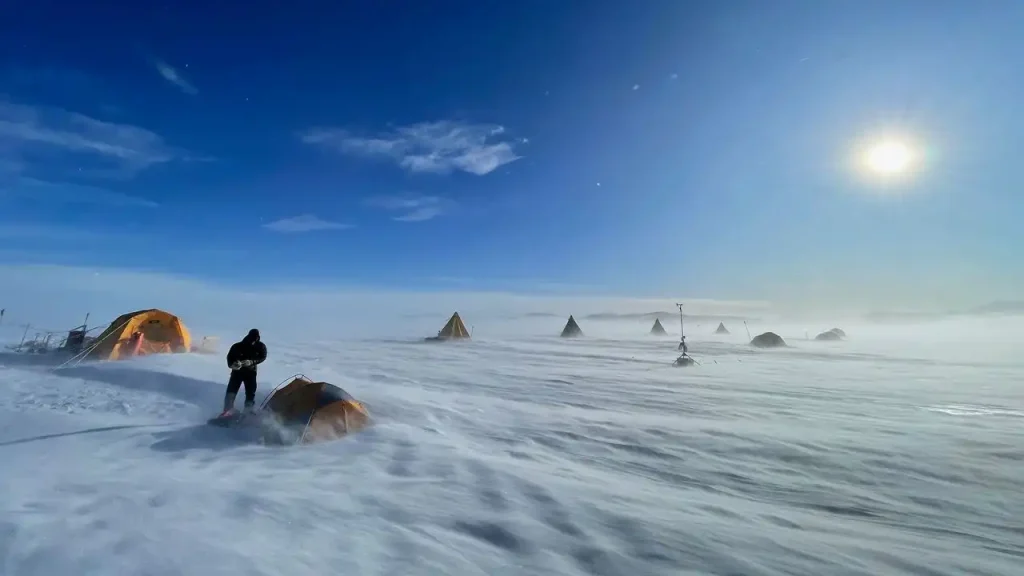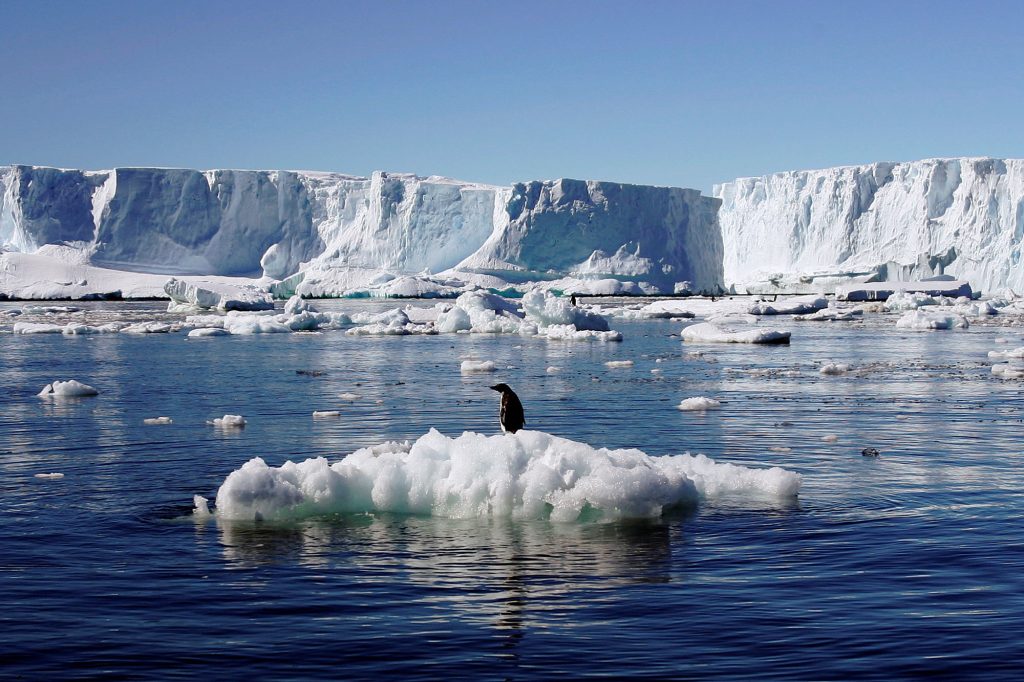Antarctica, the southernmost continent on Earth, is a land of extreme cold, vast ice sheets, and incredible wildlife. Though it might seem like a frozen wasteland, this continent is fascinating and divided into two major land regions: East Antarctica and West Antarctica. Understanding these regions helps us appreciate the unique geography of this icy continent.

East Antarctica: The Frozen Giant
Location and Size
East Antarctica is the larger of the two regions, covering nearly two-thirds of the entire continent. It’s located mostly in the eastern hemisphere, hence its name. If you look at a map, you’ll see East Antarctica is on the side facing Australia. It is a vast, icy plateau that is home to the South Pole, the southernmost point on Earth.

Geography and Ice Sheets
East Antarctica is known for its thick ice sheets, some of the oldest and thickest on the planet. In some areas, the ice is over 4 kilometres thick! This ice is so heavy that it has pushed the land beneath it down, making parts of East Antarctica below sea level. Beneath all this ice, the land is a mix of mountains and valleys, with some areas covered in ancient rock formations that are millions of years old.

The ice sheet in East Antarctica is incredibly important. It holds about 80% of the world’s fresh water, and if it were to melt entirely, global sea levels could rise by more than 60 metres! However, this ice is incredibly stable, and scientists believe it has been largely unchanged for millions of years.
Climate and Weather
The climate in East Antarctica is one of the coldest on Earth. The coldest temperature ever recorded on the planet was at the Russian research station Vostok in East Antarctica, where the thermometer dropped to an astonishing -89.2°C! The weather here is harsh, with strong winds and little snowfall. However, because the air is so dry, the snow that does fall never melts and slowly builds up over thousands of years, adding to the massive ice sheets.

Wildlife
Despite the extreme cold, East Antarctica is home to some resilient wildlife. Penguins, especially Emperor Penguins, are well-adapted to this environment. These birds huddle together in large groups to keep warm during the brutal winters. Seals and a variety of birds also thrive along the coast, where the icy waters are rich in fish and other marine life.

West Antarctica: The Ice Kingdom
Location and Size
West Antarctica is smaller than its eastern counterpart but no less important. It is located mostly in the western hemisphere, facing South America. West Antarctica is separated from East Antarctica by the Transantarctic Mountains, a massive mountain range that stretches across the continent.

Geography and Ice Sheets
West Antarctica is very different from East Antarctica in terms of geography. While East Antarctica is a high plateau, West Antarctica is lower and more rugged. Much of West Antarctica is below sea level, making it more vulnerable to the effects of climate change. The ice sheet here is not as thick as in the east, but it is still massive, holding enough ice to raise global sea levels by about 3 metres if it were to melt completely.

One of the most notable features of West Antarctica is the Antarctic Peninsula, a long, narrow stretch of land that reaches towards South America. This area is one of the fastest-warming places on Earth, and scientists are closely monitoring it for signs of ice melting and changes in the environment.
Climate and Weather
The climate in West Antarctica is slightly milder than in the east, especially on the Antarctic Peninsula. However, it is still incredibly cold and windy. The weather here is more variable, with some areas experiencing more snowfall. Because parts of West Antarctica are closer to the ocean, the temperature can be slightly warmer, leading to more significant ice melting in some regions.

Wildlife
Like East Antarctica, West Antarctica is home to a variety of wildlife, particularly along the coast and on the Antarctic Peninsula. Penguins, seals, and seabirds are common, and the waters surrounding West Antarctica are teeming with life. Krill, tiny shrimp-like creatures, are a vital part of the food chain, supporting whales, seals, and birds.

The Transantarctic Mountains: Nature’s Divider
Between East and West Antarctica lies the Transantarctic Mountains, one of the longest mountain ranges in the world. These mountains stretch over 3,500 kilometres and act as a natural divide between the two regions. The mountains are mostly covered in ice, with only a few peaks, called “nunataks,” sticking out above the ice sheet.

The Transantarctic Mountains are geologically significant because they reveal the different histories of East and West Antarctica. While East Antarctica is made up of ancient, stable rock, West Antarctica is more geologically active, with its land made up of younger, volcanic material. These mountains also contain valuable scientific information, as the ice and rocks hold clues about Earth’s past climate and the history of the Antarctic continent.
Antarctica’s Future: Challenges and Conservation
Antarctica is a place of stunning natural beauty and extreme conditions, but it is also a region facing significant challenges. Climate change is having a noticeable impact, particularly in West Antarctica, where rising temperatures are causing some ice sheets to melt. Scientists are studying these changes closely, as the melting ice could have serious consequences for global sea levels.

Conservation efforts are crucial to protect Antarctica’s unique environment. The continent is governed by the Antarctic Treaty, an agreement signed by countries around the world to preserve the continent for peaceful and scientific purposes. Under this treaty, Antarctica is protected from mining, military activities, and pollution, ensuring that this pristine land remains untouched for future generations.

Conclusion: A Land of Extremes
Antarctica, with its two major land regions, is a continent of extremes. East Antarctica, with its massive ice sheets and freezing temperatures, stands in contrast to the more dynamic and vulnerable West Antarctica. Together, these regions form a unique part of our planet, a place that is both awe-inspiring and vital to the Earth’s climate system.
Understanding the differences between East and West Antarctica helps us appreciate the complexity and beauty of this icy continent. As we learn more about these regions, we can better protect them and ensure that Antarctica remains a place of wonder and scientific discovery for years to come.
For more interesting articles, please visit www.kidzherald.com





